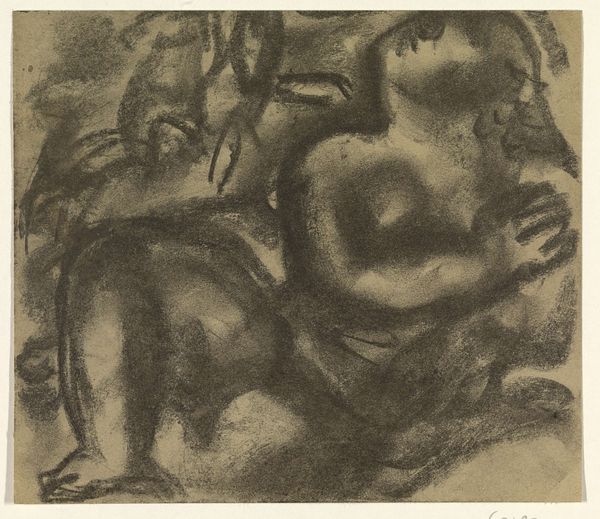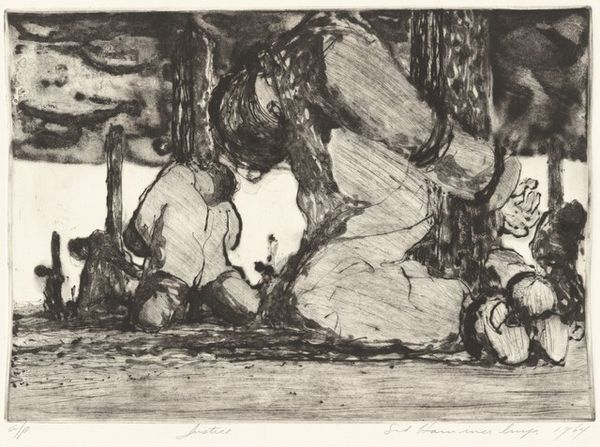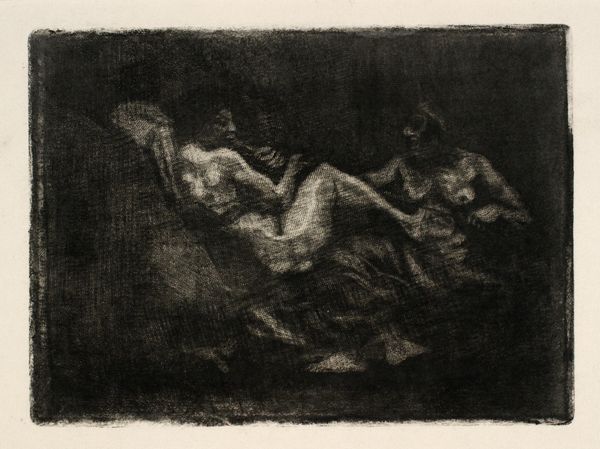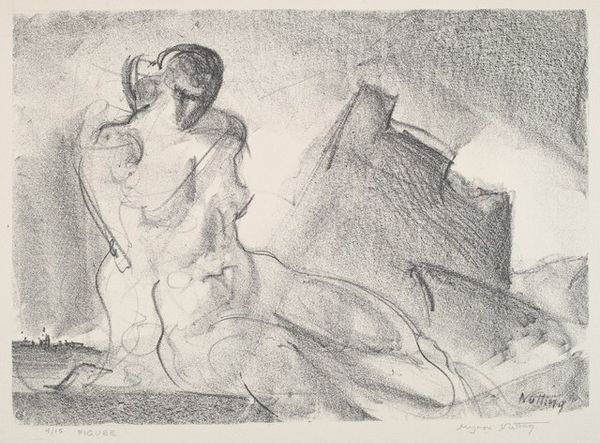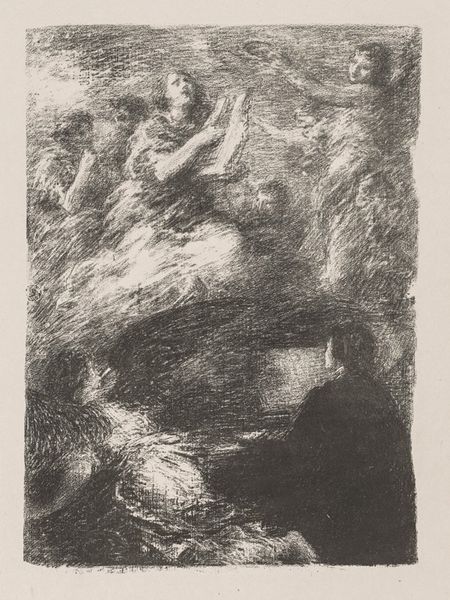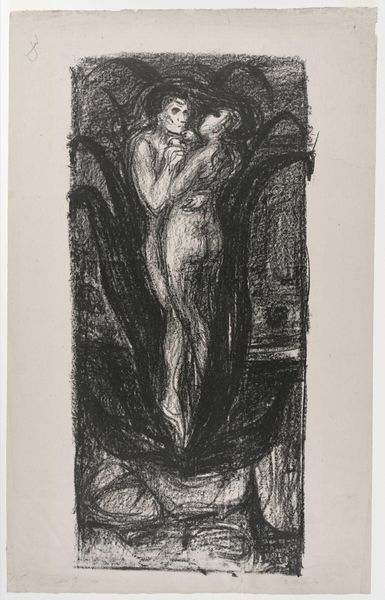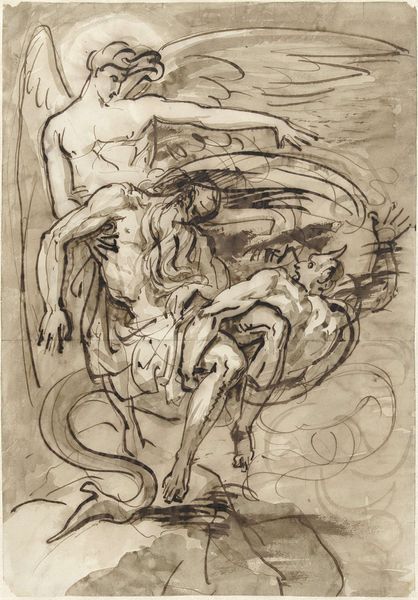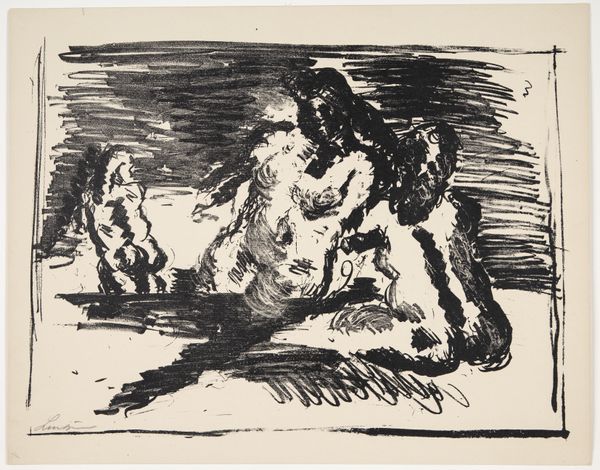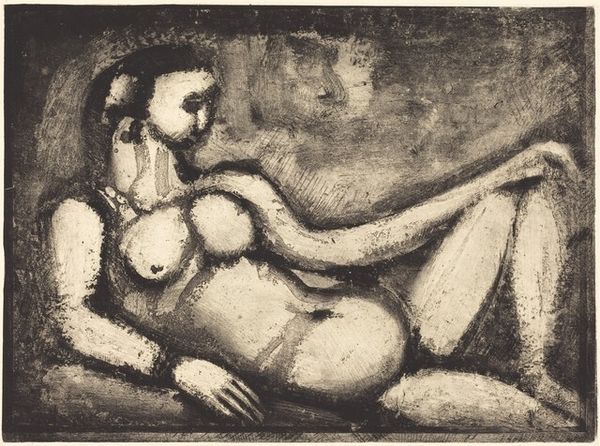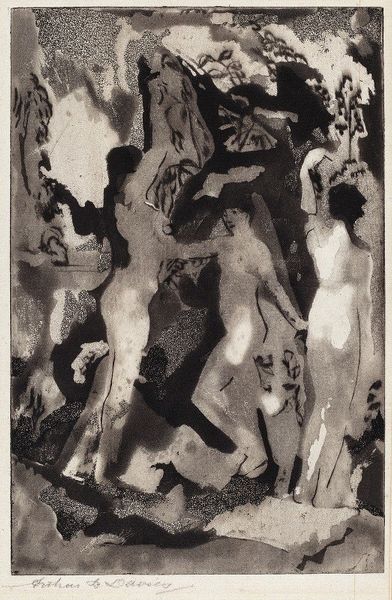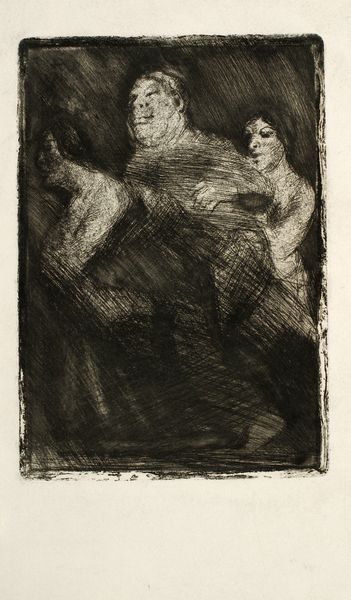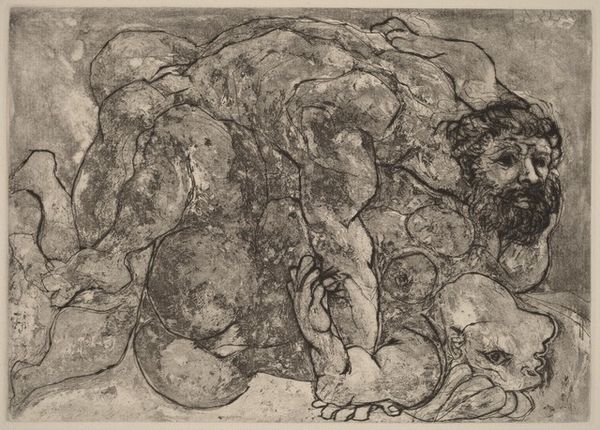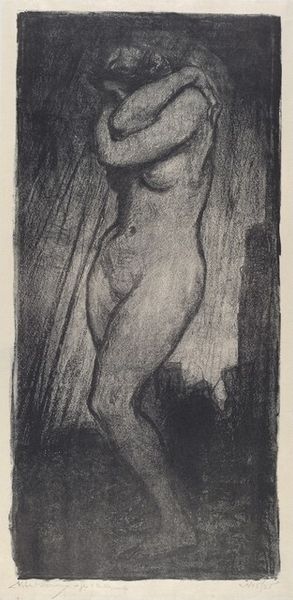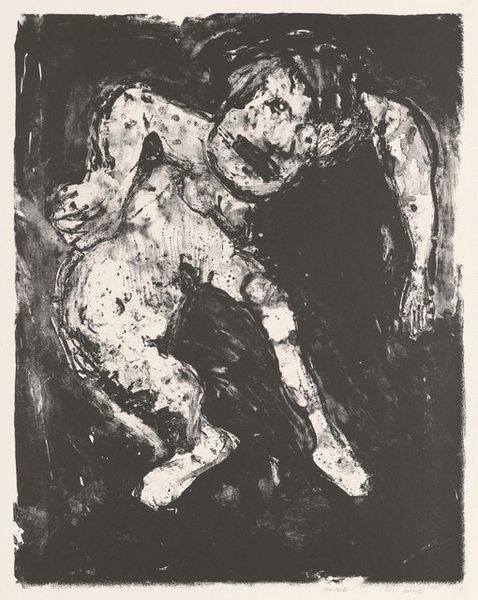
drawing, print, charcoal
#
drawing
# print
#
pencil sketch
#
landscape
#
charcoal drawing
#
figuration
#
charcoal art
#
pencil drawing
#
surrealism
#
abstraction
#
charcoal
#
charcoal
Copyright: National Gallery of Art: CC0 1.0
Curator: Before us, we have "Figures in Landscape" a work rendered in charcoal by William Brice in 1962. What strikes you initially about this piece? Editor: Well, its immediately arresting, there's a dark, almost mournful quality in the contrasting tones. The composition feels fragmented, like pieces of a dream stitched together, a very unusual take on a classical theme, something of surrealistic note maybe, I can almost feel the textural difference through the drawing medium, even without physically touching it. Curator: It is compelling. Brice's work often reflects his engagement with mythology and classical art but filtered through the lens of postwar existentialism. There's a tension here. The human figure, traditionally a symbol of reason and order, is rendered in these gestural, almost dissolving strokes against an ambiguous, shifting background, what sort of context can you draw from that? Editor: Exactly! See how the line quality varies – sharp, defined edges versus soft, blurred transitions. The forms are abstract, but evoke human figures huddled together; the landscape does something similar. He’s deliberately playing with representation and its failure, or, perhaps more precisely, transformation. In this setting it makes one wonder about what the setting might be. Curator: Brice came of age artistically during the height of Abstract Expressionism in America. The movement championed individual expression. So what is so particularly intriguing here is how that inward focus began blending back with figurative elements in the late 50s and early 60s with Brice himself acting as one of its central proponents, his artistic circle, including figures like Rico Lebrun, certainly felt this transition very acutely. Editor: Yes! The monochromatic palette aids the sense of gravity and introspection; there’s a concentration and simplicity to it, where we are nudged into the essence, or the underlying framework, without much of anything to distract. Is he alluding to society in the atomic age with this style and subject, do you think? Curator: Quite possibly so. One can look to other mid-century figurative expressionists like Nathan Oliveira, for similar social-cultural examinations. This blending of abstract and figurative elements speaks to the period's broader grappling with questions of identity, and the unease, particularly amongst intellectual circles, about their place in the rapidly changing world. A sentiment itself as shifting and textured as this work's charcoal medium and subjects. Editor: A work that prompts not just viewing, but also feeling, and perhaps seeing the echoes of a generation trying to see clearly. Thank you, it will take me a while to unravel these textures and themes, a very rich piece indeed.
Comments
No comments
Be the first to comment and join the conversation on the ultimate creative platform.
